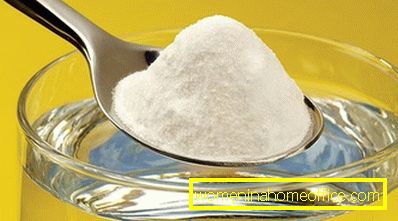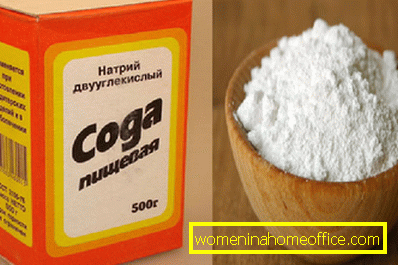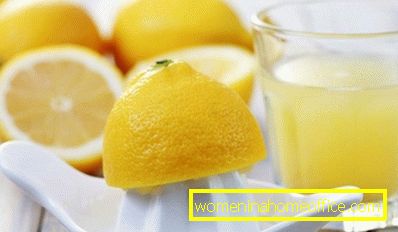How to extinguish soda with vinegar
How to extinguish soda with vinegar? To many cooks, this question may seem simple and absurd. But for those who first encountered baking a lush dough, this is a real problem. Today we will tell you how to properly extinguish soda and give several alternative variants of this process.
To extinguish or not to extinguish - that is the question

Before considering the main and interesting question of how to extinguish soda with vinegar for baking, let's understand the simple concepts: what kind of substance and why it is so necessary for us in the preparation of desserts.
For those who skipped school chemistry lessons safely, we explain: soda is a chemical element with the scientific name sodium bicarbonate. In everyday life, it is used as a cleaner for pipes, cutting boards and means for washing the plate from fat. In cooking, it is needed to get unusually tasty and lush desserts.
By itself, the soda in the dough does not bring any benefit. And only when interacting with an oxidizing agent, for example, sour cream or kefir, and in our case with vinegar, a chemical reaction will occur, during which carbon dioxide is formed. This is the effect that we need to achieve in order for the dough to rise, become loose and fluffy. If a similar reaction is not achieved and just add baking soda to the dough, the taste of the finished dish will be with a characteristic soap-sugary tinge.
Dexterous hands are not for boredom: extinguish soda properly

So, how do you put out the baking soda with vinegar for baking right? In fact, there are two options, and each of them, it is worth noting, is good in its own way. Perhaps we start with the easiest way - soda slaking with vinegar in a tablespoon.
First of all, you should consider what vinegar will be used for this. And the point here is not at all in its varieties, we can use any - white, and apple, and the most common table. Many in the kitchen cabinet store the usual 9% vinegar solution. Much less often it is possible to find the concentrated acetic essence. In the first case, the oxidizer is used in pure form, in the second - the essence will need to be diluted with water in a ratio of 1 to 7.
Further actions should be:
- We take a large tablespoon and pour into it the necessary amount of soda, as stated in your recipe.
- Dissolve the dry vinegar mixture. The result should be some kind of "pop".
- About the amount of vinegar to clarify. For example, for a complete reaction to 1 tsp. soda accounts for 2 tsp. vinegar. If you have a different amount, the ratio is reduced or increased proportionally.
- As soon as the soda starts to sizzle, we immediately add it to the other ingredients, quickly knead the dough and send it to the oven.
To obtain the porosity of the dough, it is extremely important that the decomposition reaction takes place directly in the mixing process, and not in a spoon. That is why hesitate with the addition of soda is not worth it. If you find it difficult to mix soda with vinegar, which is called "eye" in a tablespoon, all this can be done in a small glass. The order and principle of action in this case remain the same.

The second option soda slag - division of ingredients into groups. Experienced chefs use just such a method, considering it the most productive and efficient. This is also not difficult:
- To begin with, we divide the ingredients into two parts: liquid and dry. Soda is added to the dry components, and the oxidizer to the liquid.
- Then pour the liquid ingredients into the bowl, mix, and then quickly enter the flour, soda and all the other ingredients.
- The dough, as in the previous version, is quickly kneaded and sent to the oven in order to enhance the chemical reaction using heat treatment.
Using this method, remember that you need to add soda to the dough only if its basic composition does not contain acidic ingredients: jam, kefir, sour cream, yogurt and others. It is the dough itself, not the filling!
Alternatives

There are also such cases that you need to extinguish soda without vinegar, for example, it simply is not in the house. How to be then? There is no need to stop the cooking process, because on this account wise cooks have come up with several alternative options:
- Lemon acid. In order for soda to fully react with citric acid, the ingredients must be used in proportions of 1 to 1.5.
- Freshly squeezed lemon juice is another solution than to extinguish soda except vinegar. Squeeze 9 tsp out of lemon. juice, and this will be enough to interact with 1 tsp. drinking soda.
- Sour milk, sour milk, kefir. These ingredients are used in recommended proportions. And if there is no oxidizing agent in the recipe, then take 1-2 tablespoons of any fermented milk product for the reaction.
- Homemade pickle - usually vinegar is added to it at the conservation stage.
When making a choice between alternatives, what can soda be extinguished if there is no vinegar, know that the dough will rise in any case, but will not be as lush as when using a standard oxidizer. Therefore, expect splendid heights from biscuit is not worth it, but any acetic analogue can easily save you from the sugary aftertaste of the dish.
Now you know all about how to extinguish soda with vinegar, and you can give odds to even experienced cooks. Good luck baking and puff pastry!